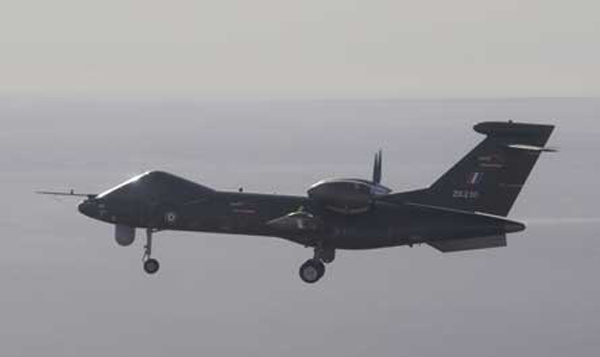Motorsport aficionados of a certain age love to love Lola. For 50 years, the master of the British kit car has been a frontrunner, either in its own right or as the engineering power behind big teams in formulas ranging from Indianapolis and Can-Am to Le Mans and Formula 1.
Casual sports fans may be unaware a healthy Lola won two Le Mans Series constructors titles in 2009 – and that it builds carbon composite aircraft parts and designed and supplied tooling for aircraft such as the Learjet 85 and the BAE Systems-Thales Watchkeeper unmanned system.
Indeed, since Lola diversified after Martin Birrane bought the company,revenue has diversified dramatically, with motorsport accounting for just a third of sales. The rest is in aerospace, defence, communications and automotive.
Managing director Robin Brundle (note to motorsport fans, he is the brother of BBC commentator and former F1 driver Martin) praises Birrane’s instinct to leverage Lola’s composites expertise and push into fast-growing industries as hugely foresightful. Firstly, says Brundle, motorsport tends to keep engineering and production intensely busy for four months of the year and relaxed for eight.
With 4,000 customers, Lola is “more robust” than most racing suppliers. However, motorsport is a volatile and cash-hungry business, a “perpetual wheel of technology and performance”.
Secondly, Lola’s motorsport-derived composites expertise feeds technology to other customers, and motorsport is also an “exciting showcase” for those technologies. Aerospace and defence projects feed technology into motorsport: “There’s definitely a cross-fertilisation of ideas.” Thanks to its motorsport heritage, Lola is also hardwired for speed. A design on Thursday, manufacture on Friday and race on Saturday mentality is a “winning edge” that appeals to customers in other sectors. Brundle says motorsport experience helps Lola understand that repeatedly reliable manufacture of lightweight, robust components in composite materials is both an art and a science, which plays to its work in unmanned aircraft. “It doesn’t get any harder than the car being slammed into the concrete at Indy,” he says, adding that Lola is good at composite repairs.
In addition to the Watchkeeper, Lola built the monocoque fuselage for BAE’s Mantis UAV demonstrator and helped Meggit Defence develop the Voodoo aerial target and Banshee UAV.
For Bombardier, it made tooling for the Challenger, Gulfstream and Global Express business jets. Other Lola products include shells for first-class airliner seats.
During the past two years, Lola has taken what amounted to two separate companies – motorsport and composites – creating a centralised talent pool of multi-disciplinary teams. That move has helped to more than double sales during the past 12 months, to a forecast £25 million for 2011, with profit tracking a similar growth rate. Lola, which now describes itself as a specialist designer and supplier of lightweight composite structures, has gone from employing 163 staff to 208, including outsiders. The three-to-five-year sales target is £50 million.
One key objective is to increase the amount of production work, as opposed to design, development and tooling. Lola has five autoclaves at its factory in Huntingdon, Cambridgeshire, big enough to make components up to the size of a car, and is also working to improve an out-of-autoclave resin transfer moulding process. The advantage of RTM, says Brundle, is its suitability for mass production, at a three-to-four-minute cycle.
As typically employed, however, RTM results in high scrappage rates, which Lola hopes to reduce. Also, RTM is limited to production of components with relatively low strength requirements. Lola could also bid to produce larger items, such as airframe components, but doing that would demand a “significant investment” in a 20m autoclave.
Source: Flight Global

